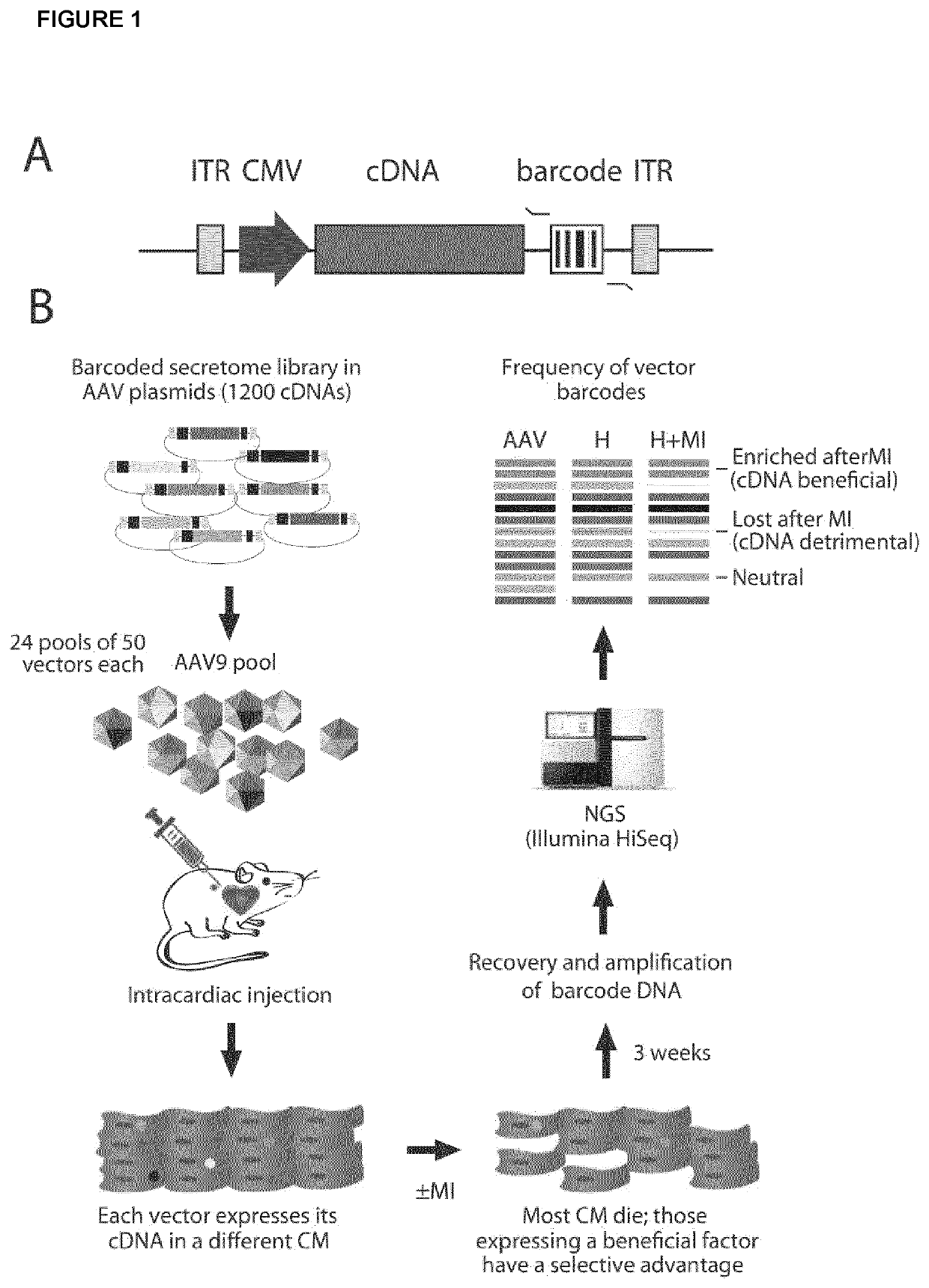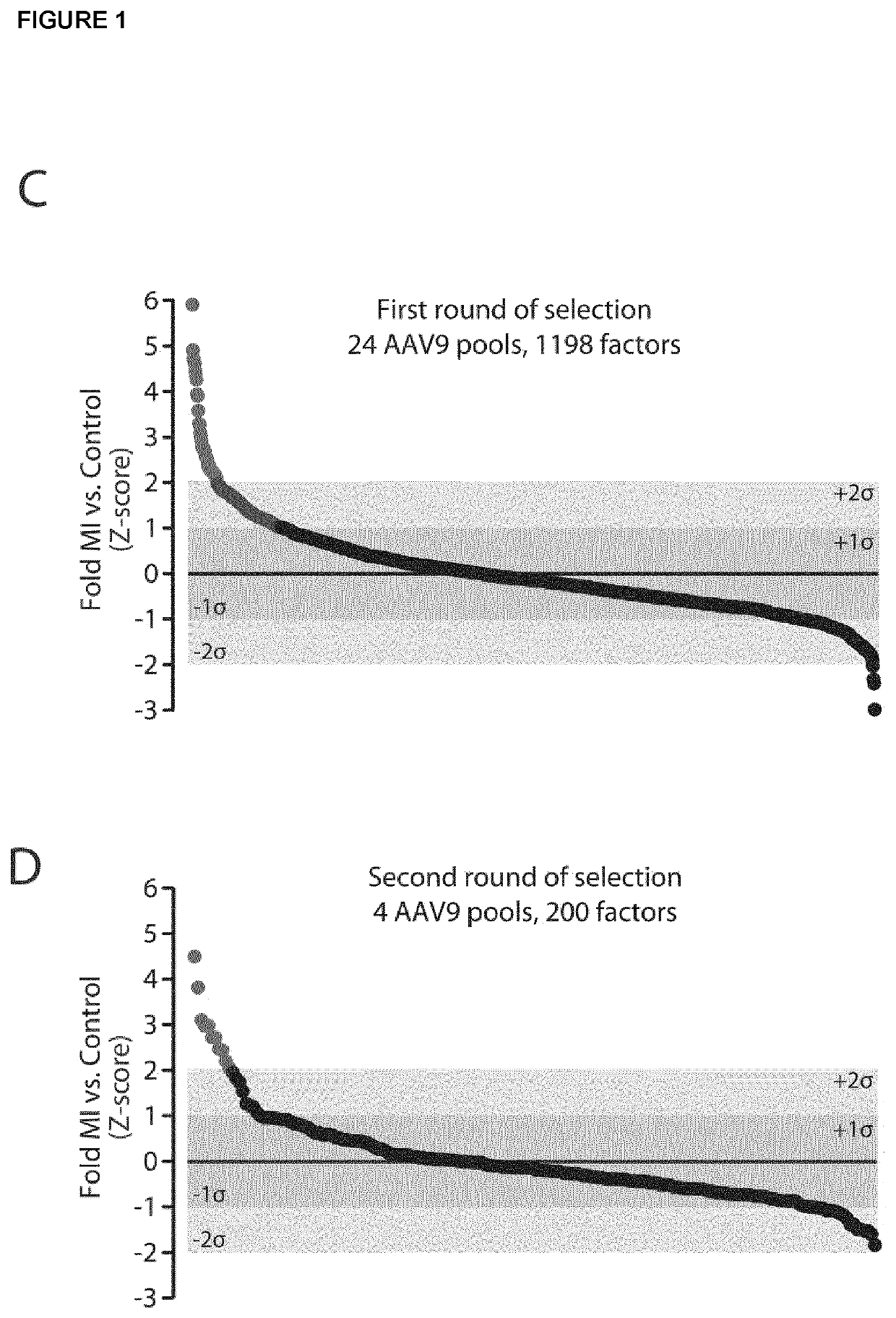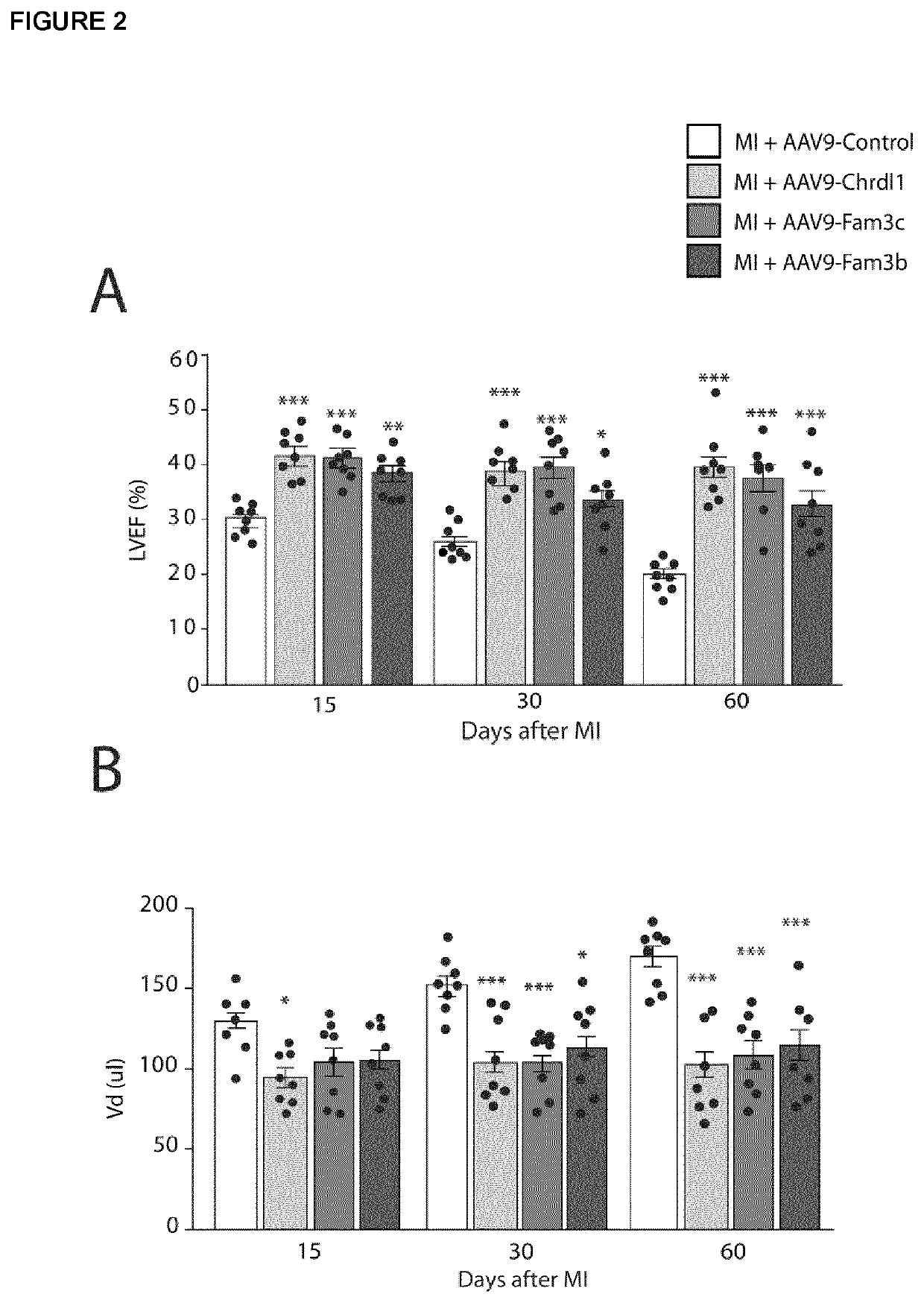Proteins with cardioprotective activity
a technology of protein and activity, applied in the field of proteins with cardioprotective activity, can solve the problems of irreversible death of a large number of myocardial cells, no drug or treatment of any kind protects the heart during acute ischemia, poor prognosis of this condition, etc., to reduce reparative fibrosis, reduce fibrosis after infarction, and preserve cardiac function
- Summary
- Abstract
- Description
- Claims
- Application Information
AI Technical Summary
Benefits of technology
Problems solved by technology
Method used
Image
Examples
example 1
FunSel, an In Vivo Selection Procedure to Identify Novel Cardiac Therapeutics for Myocardial Infarction
[0210]We recently developed FunSel (1,2), a novel procedure for the in vivo functional identification of novel therapeutic factors against degenerative conditions that here we applied with the aim to identify factors ensuring cardiac protection after myocardial infarction (MI). This is based on the use of adeno-associated virus (AAV) vectors, which are exquisite tools for highly efficient cardiac gene transfer (3).
[0211]In brief, we generated an arrayed library of genes that corresponds to the secretome, defined as the subset of proteins secreted into the extracellular environment of a cell. By a computational approach (4), 2033 unique proteins have been identified in the genome, bearing a signal peptide and lacking any transmembrane domain or intracellular localization signal and thus potentially secreted from the cells. The size of the AAV genome, limiting cloning to 4.5 kb, and ...
example 2
[0214]Efficacy of Chrdl1, Fam3c and Fam3b in Preserving Cardiac Integrity and Function after Myocardial Infarction in Mice
[0215]Based on the FunSel results, we decided to validate and characterize the effect of the selected top secreted factors (Chrdl1, Fam3c and Fam3b) expressed as individual AAV2 / 9 vectors upon myocardial infarction in mouse hearts, with the specific purpose to assess the capacity of each factor to counteract or reduce ischemic damage and promote cardiac function.
[0216]Eight-week-old CD1 mice were subjected to MI and, at the same time, injected in the LV peri-infarcted area with AAV2 / 9 vectors expressing Chrdl1, Fam3c, Fam3b or a control empty vector (1×1011 vg / animal; n=8 per group). Our previous experience indicates that this procedure results in efficient myocardial transduction and month-long expression of the transgene (1,5). Cardiac function of the animals was monitored by echocardiography at 15, 30 and 60 days post MI.
[0217]As reported in FIG. 2, AAV2 / 9-med...
example 3
[0221]AAV2 / 9-Mediated Expression of Chrdl1, Fam3c or Fam3b Counteracts Pathological Left Ventricle Remodelling Associated with the Onset of Heart Failure in Mice
[0222]Two months after MI, we investigated also the effect of each secreted factor on the expression of a set of genes previously associated with LV pathological remodelling (consisting in overexpression of β-myosin heavy chain (pMHC) and decreased levels of α-myosin heavy chain (αMHC), Sarcoplasmic / endoplasmic reticulum Ca2+-ATPase 2a (SERCA2a) and ryanodine receptor 2 (RYR2)).
[0223]Total RNA was extracted from LV tissue and analysed by qRT-PCR using TaqMan probes specific for the investigated genes. Consistent with echocardiographic and morphometric observations, AAV2 / 9-Chrdl1, AAV2 / 9-Fam3c and AAV2 / 9-Fam3b counteracted the characteristic pattern of gene expression typically associated with pathological LV remodelling observed in AAV2 / 9-control mice, reducing the level of β-MHC and increasing those of α-MHC, SERCA2a and RY...
PUM
| Property | Measurement | Unit |
|---|---|---|
| pharmaceutical composition | aaaaa | aaaaa |
| frequency | aaaaa | aaaaa |
| size | aaaaa | aaaaa |
Abstract
Description
Claims
Application Information
 Login to View More
Login to View More - R&D
- Intellectual Property
- Life Sciences
- Materials
- Tech Scout
- Unparalleled Data Quality
- Higher Quality Content
- 60% Fewer Hallucinations
Browse by: Latest US Patents, China's latest patents, Technical Efficacy Thesaurus, Application Domain, Technology Topic, Popular Technical Reports.
© 2025 PatSnap. All rights reserved.Legal|Privacy policy|Modern Slavery Act Transparency Statement|Sitemap|About US| Contact US: help@patsnap.com



